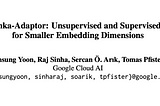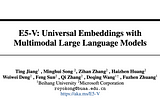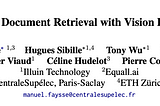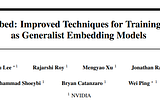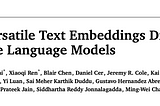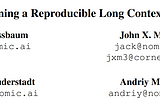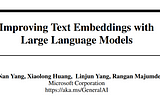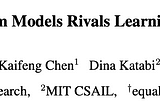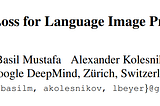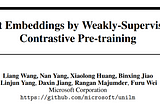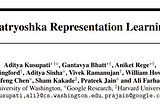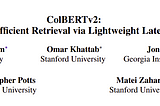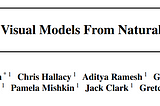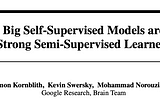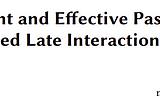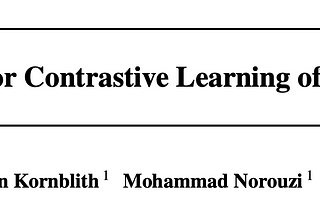A framework designed for the customization of LLM embeddings, facilitating substantial dimensionality reduction while maintaining comparable performance levels.
A framework that adapts Multimodal Large Language Models for achieving universal multimodal embeddings by leveraging prompts and single modality training on text pairs, which demonstrates strong performance in multimodal embeddings without fine-tuning and eliminates the need for costly multimodal training data collection.
A retrieval model based on PaliGemma to produce high-quality contextualized embeddings solely from images of document pages, and employees late interaction allowing for efficient and effective visually rich document retrieval.
Introduces architectural innovations and training recipe to significantly enhance LLMs performance in general-purpose text embedding tasks.
A 1.2B versatile text embedding model achieving strong retrieval performance by distilling knowledge from LLMs into a retriever.
A 137M parameter, open-source English text embedding model with an 8192 context length that outperforms OpenAI's models on both short and long-context tasks.
Leverages proprietary LLMs to generate diverse synthetic data to fine tune open-source decoder-only LLMs for hundreds of thousands of text embedding tasks.
A visual representation learning method that leverages generative models to synthesize large-scale curated datasets without relying on any real data.
A simple pairwise Sigmoid loss function for Language-Image Pre-training that operates solely on image-text pairs, allowing for larger batch sizes and better performance at smaller batch sizes.
A family of text embeddings trained in a contrastive manner with weak supervision signals from a curated large-scale text pair dataset CCPairs.
Encodes information at different granularities and allows a flexible representation that can adapt to multiple downstream tasks with varying computational resources using a single embedding.
Couples an aggressive residual compression mechanism with a denoised supervision strategy to simultaneously improve the quality and space footprint of late interaction.
A vision system that learns image representations from raw text-image pairs through pre-training, enabling zero-shot transfer to various downstream tasks.
A Semi-supervised learning framework which uses unsupervised pre training followed by supervised fine-tuning and distillation with unlabeled examples.
Introduces a late interaction architecture that adapts deep LMs (in particular, BERT) for efficient retrieval.
Shows that retrieval can be practically implemented using dense representations alone, where embeddings are learned from a small number of questions and passages by a simple dual encoder framework.
A simplified framework for contrastive learning that optimizes data augmentation composition, introduces learnable nonlinear transformations, and leverages larger batch sizes and more training steps.
